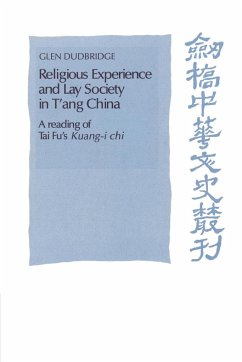
The Great Wall of China 221 BC-AD 1644

PAYBACK Punkte
8 °P sammeln!
The most famous example of fortification in the world, the Great Wall of China stretches for more than 6,000km across inhospitable terrain. Charting its development from its earliest origins in the 7th century BC through to the present day, this account reveals the true history of the wall, and explores the myths that surround it. Included are details of what it was like to live within the wall, how it was garrisoned and patrolled, and a discussion of how effective it was against attack. Through extensive examination of both ancient and modern sources, colour maps, artwork and photographs, thi...
The most famous example of fortification in the world, the Great Wall of China stretches for more than 6,000km across inhospitable terrain. Charting its development from its earliest origins in the 7th century BC through to the present day, this account reveals the true history of the wall, and explores the myths that surround it. Included are details of what it was like to live within the wall, how it was garrisoned and patrolled, and a discussion of how effective it was against attack. Through extensive examination of both ancient and modern sources, colour maps, artwork and photographs, this book illustrates why the wall is one of the great wonders of the world.













